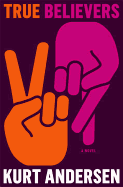
| Publisher: | Random House | |
| Genre: | General, Political, Fiction, Contemporary Women, Historical, Literary | |
| ISBN: | 9781400067206 | |
| Pub Date: | July 2012 | |
| Price: | $27 |
| Fiction |
by Kurt Andersen
As Kurt Andersen's rambunctious True Believers opens, narrator Karen Hollander turns down a potential Supreme Court nomination, knowing the political vetting process will expose a secret she has been carrying since her radical student days in 1968. Instead, she begins a memoir to tell the true story of those years. Jumping back and forth in time, the novel gradually uncovers what really happened when she was 18 and hellbent on saving the world.
Andersen brings all the wit he honed at the Harvard Lampoon and Spy, as well as the probing eye for cultural details shown in his previous novels, Turn of the Century and Heyday. In Karen's granddaughter Waverly, an Occupy protester, he brings to life the contemporary fruit of the seeds planted in the protests of the Vietnam era.
Beneath the surface of Karen's memoir runs an early abandoned Catholicism with the repetitive superficiality of its confession/absolution pattern--"rinse, repeat, rinse, repeat," as her latest lover calls it. Likewise, her childhood infatuation with Ian Fleming's James Bond novels and their romantic duels between good and evil haunts her.
In Andersen's epic novel, the young always think that they are on to something new, that their drive to change the world justifies their behaviors, that the improved future will forgive them. It is the great ambiguity of the 1960s that the grandchildren of the baby boomers discover that the practicalities of career and family often force us "to work hard, become successful, and leave both radicalism and true love--every form of wild romance--to others." Only in the end does Andersen suggest that perhaps, after all her searching for the truth, Karen Hollander can break the cycle and rediscover some of the romance of her youth. --Bruce Jacobs, founding partner, Watermark Books & Cafe, Wichita, Kan.

| Publisher: | Amy Einhorn/Putnam | |
| Genre: | Fiction, Literary | |
| ISBN: | 9780399157998 | |
| Pub Date: | July 2012 | |
| Price: | $25.95 |
| Starred | Fiction |
by Dianne Warren
Diane Warren's debut novel, Juliet in August, won the prestigious Canadian Governor General's Award for fiction; it richly deserves the honor.
Juliet, Saskatchewan, is a tiny, dusty town on the edge of the Little Snake sand hills. In overlapping stories, Warren etches the lives of Juliet's people in the reader's memory. No pyrotechnics, nothing flamboyant, just perfect descriptions of the singular events that fill the days and nights in Juliet.
It's a hot and blowy day when a horse, a fine-looking Arab, shows up on Lee Torgeson's property. Lee is the foundling left on Lester and Astrid's porch many years ago. Now, his adoptive parents are gone and he is uncomfortable with this generous legacy left to him. He idly mounts the horse and sets out for a short ride that turns into the 100-mile centerpiece of the tale--a very long day spent ruminating, reminiscing, seeing people and sorting out what's next.
We meet Norval, the banker who grieves over the decisions he makes about poor farmers' loans and foreclosures. Blaine Dolson, a father with too many kids and a dithery wife, comes to an epiphany about his own culpability for his situation and a new balance is found in that household.
Lee rides dreamily through it all--he is a bit of a poet at heart--thinking about a long-ago similar ride done on a bet, remembering the words of Ozymandias: "Look on my works, ye mighty and despair," finding objects long buried in the eternal sands. Such is the rhythm of a day in Juliet. --Valerie Ryan, Cannon Beach Book Company, Ore.

| Publisher: | Twelve | |
| Genre: | General, Fiction, Fantasy, Action & Adventure | |
| ISBN: | 9781455509621 | |
| Pub Date: | July 2012 | |
| Price: | $24.99 |
| Fiction |
by Howard Anderson
Imagine a small, solitary figure walking along a winding track somewhere in the central Australian desert, "about two feet tall and covered with short brown fur," by Howard Anderson's description. "He had a short, thick tail that dragged on the ground when he walked upright and a ducklike bill" where his nose would be--oh, and he's carrying an empty soft drink bottle. Meet Albert, a recent escapee from the Adelaide Zoo. This platypus wanted to be free, to discover a place where things haven't changed: Australia "like it used to be." Now he's cut off from water, lost and dying. So begins Albert of Adelaide, Anderson's charming and delightful first novel.
Fortunately for Albert, he stumbles upon a camper named Jack--a large, singing, pipe-smoking wombat with a graying handlebar mustache who provides tea and survival. They set off together and soon come upon a supply depot in Ponsey Station run by a kangaroo with a bar frequented by heavy-drinking bandicotts. After a raucous night, the store burns down; Albert and Jack barely escape alive and decide it's best to split up. Albert is learning fast. He has to feed himself, protect himself and make his own decisions. Some decisions are better than others and, as Anderson writes, a "really bad one could have serious consequences." Like, for example, embarking on a life of crime....
Albert from Adelaide explores timeless themes of friendship, loyalty and survival by presenting animal characters in a straightforward, believable way that just happens to be fantastical as well. --Tom Lavoie, former publisher

| Publisher: | W.W. Norton | |
| Genre: | Fiction, Literary | |
| ISBN: | 9780393062946 | |
| Pub Date: | July 2012 | |
| Price: | $24.95 |
| Fiction |
by Gina Apostol
Gina Apostol's Gun Dealers' Daughter, a stunning novel of the Marcos-era Philippines, is a story of politics and passion, of insurrection and rebellion, of growing up and the consequences of childhood naïvete. When Soleded Soliman (Sol) leaves home for university in Manila, she finds herself swept up in the Communist fervor on campus. But, as the daughter of prominent gun dealers, she is a part of what is being rebelled against. Then again, perhaps all that matters is her crush on Jed, the ringleader of the pack, and perhaps she is really nothing but a useful fool in the rebellion.
"Words are all we have to save us," her doctors tell her years later, "but at the same time, they are not enough to make us whole." This proves to be the paradox of Sol's life, as she tells her story in a desperate attempt to find out who she was--and therefore, who she is--but in doing so, only rediscovers how little she understands. Her telling and retelling and editing and tweaking of her own history feels disjointed in the opening chapters, but ultimately proves to be one of the most successful aspects of Apostol's creation; the technique invites readers into the very core of Sol's experiences, accompanying her on her journey of self-understanding--and, perhaps more importantly, self-acceptance. In the end, Sol is left with as many questions as she has answers, but readers are treated to a captivating look into this period of Philippine history and the gripping story of one girl's struggles to find her place in the world. --Kerry McHugh, blogger at Entomology of a Bookworm
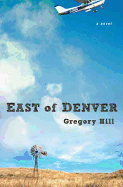
| Publisher: | Dutton | |
| Genre: | General, Fiction | |
| ISBN: | 9780525952794 | |
| Pub Date: | July 2012 | |
| Price: | $25.95 |
| Fiction |
by Gregory Hill
In East of Denver, a darkly comic tale of disappearing civilization in the modern rural West, wry humor and desperate characters mix in an arid landscape as a family falls apart. Gregory Hill, who works at the University of Denver library, grew up in rural Colorado and displays a keen, at times riveting, understanding of the absurdities and freedoms of small-town isolation and the dying way of life that was once the American standard.
The novel opens with 36-year-old Shakes Williams returning to the family farm in his tiny Colorado hometown to bury his cat. Shakes makes a gruesome discovery that attests to the severity of his widowed father's worsening dementia. He's also alarmed to find the tidy hum of crop cultivation and well-tended machinery that used to be the farm is now a fallow ruin--a demise abetted by the chicanery of a local bank manager. Shakes quits his Denver job to care for his father and to try to resurrect some semblance of the farm. He consequently falls into a sparse, motley social circle of old high school acquaintances whose circumstances are as abject as his own; a half-assed bank robbery plan is soon afoot.
Hill takes a morbid delight in the abasement of his characters, but he never loses track of their essential humanity or the tragedy of their stunted lives. Though the writing occasionally suffers from a choppy, affected cleverness, the fully realized characters, the vivid, harsh imagery and the bleak yet delectable irony make this debut both funny and harrowing. --Cherie Ann Parker, freelance journalist and book critic

| Publisher: | Penguin Press | |
| Genre: | Art, General, History, Biography & Autobiography, Entertainment & Performing Arts | |
| ISBN: | 9781594203404 | |
| Pub Date: | July 2012 | |
| Price: | $29.95 |
| Biography & Memoir |
by Kay Larson
In the long history of free-thinking mavericks in American art, nobody took more chances, reinvented themselves more often or expanded their craft more than the 20th-century composer John Cage. From the premiere of his notorious 1952 piece 4'33" until his death, Cage never quit challenging audiences--or himself--to expand perceptions and dissolve barriers. Kay Larson's authoritative new biography, Where the Heart Beats, is the first work on Cage to examine the influence of Zen Buddhism on him as an artist and as a man. While her book has the bones of a strict chronological biography, Larson takes some of the same chances as her subject, narrowing and widening her scope to include influences, contemporaries, lovers and collaborators of Cage. She ends up not just tackling one elusive man but creating an entire cultural history of America's opening of itself to Eastern wisdom and avant-garde music.
Cage was in constant motion as an artist and a man, challenging sexual mores, the nature of musical composition and performance and even the tools of trade--altering pianos with objects placed on their strings was one of his least radical innovations. What Larson's magisterial biography proves, though, is that Cage was never just a mere trickster. His expansive works were an attempt at finding what he discovered in the austere discipline of Zen: insight into the nature of reality itself. --Donald Powell, freelance writer

| Publisher: | Viking | |
| Genre: | Biography & Autobiography, Personal Memoirs | |
| ISBN: | 9780670023615 | |
| Pub Date: | July 2012 | |
| Price: | $25.95 |
| Starred | Biography & Memoir |
by Alyssa Harad
Serious, bookish feminist Alyssa Harad didn't expect to fall in love with perfume. When she stumbled onto a few scent blogs during a late-night writing session, she intended to click around and click away. Instead, she found herself captivated by vivid prose describing the images and memories conjured up by the notes of various perfumes. Intrigued, Harad began clandestinely ordering samples online, sneaking into perfume boutiques, even attending a local smelling salon presided over by the mysterious "Curator." She uses the metaphor of seduction to trace her affair with perfume from secret flirtation to full-blown obsession.
As her new fascination grew, Harad also found herself navigating the world of wedding planning: just as intimidating as the world of perfume, and even more aggressively feminine. Hesitant to become a bride, reluctant to admit her passion for fragrance to her Birkenstock-wearing friends, Harad nevertheless found herself transformed by her fixation with scent. The pleasure she found in perfume didn't erase her feminist unease or mollify all her wedding-day fears, but it did give her a new image of herself: more alluring, more secure in her particular brand of femininity, more attuned to the details (sensory and otherwise) of her life.
Full of luscious scent descriptions and fascinating tidbits about the perfume industry, and peopled by elegant, quirky characters (who all smell wonderful), this memoir will send readers dashing to the nearest perfume counter for a bit of olfactory bliss. --Katie Noah Gibson, blogger at Cakes, Tea and Dreams
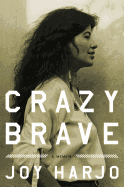
| Publisher: | W.W. Norton | |
| Genre: | Native Americans, Biography & Autobiography, Literary, Personal Memoirs | |
| ISBN: | 9780393073461 | |
| Pub Date: | July 2012 | |
| Price: | $24.95 |
| Biography & Memoir |
by Joy Harjo
Mvskoke (Creek) Nation citizen Joy Harjo (She Had Some Horses) has given us poetry with a lyrical Native American voice for decades, keeping the narrative of the contemporary native world alive in American literature. With Crazy Brave, Harjo's memoir of her journey to becoming a writer, her fans can learn the story behind the voice.
Born in Tulsa, Okla., where the Trail of Tears forced her ancestors to settle, Harjo spent her early years in the sheltering shadow of her beautiful mother and womanizing father. When their marriage dissolved, Harjo's mother married a volatile man, turning life into a maelstrom of abuse and control. Harjo narrates her escape to an Indian arts boarding school, capturing both its beauty and brutality. Her harrowing struggle with hunger as an impoverished pregnant teenager and her journey through single motherhood and through anxiety attacks to the discovery of her gifts will haunt and mesmerize readers.
Part autobiography, part prose poem and part mythology, this memoir begs to be read aloud. Harjo traces the origin of her poetic, musical and theatrical careers, but she offers much more than reminiscences. Her story is an account of the forging of a woman's soul, the hammer blows striking only to reshape her into a sharp and powerful blade of words and music. Slim of spine but lush with Harjo's trademark singing imagery, this raw and radiant coming-of-age story invites readers to "breathe the light in" and discover their own hidden capabilities. --Jaclyn Fulwood, blogger, Infinite Reads
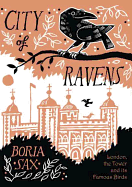
| Publisher: | Overlook Press | |
| Genre: | Animals, General, History, Birds, Nature | |
| ISBN: | 9781590207772 | |
| Pub Date: | July 2012 | |
| Price: | $22 |
| History |
by Boria Sax
The Tower of London combines commercial tourism, history and myth in a single site, and its iconic ravens are a part of all three functions. Legend has it that when the ravens leave the Tower, Britain will fall. Boria Sax's City of Ravens blends a highly readable narrative style with academic research into Britain's history, the study of birds and Sax's own interest in animal-human relationships. Sax examines the ravens' changing significance in London's imagination, from being harbingers of death and doom as they fed off the bodies of those executed at the Tower to being heralded as guardians of Britain's Empire--likely due to their role, during the Blitz, of warning of incoming bombs.
Sax's research largely dispels the popular belief that ravens had been pets at the Tower since medieval times, and he is ambivalent about the accuracy of the historical raven record. After highlighting a few individual ravens' personal histories, he finishes by considering the ecological questions raised by the captive birds whose wild counterparts have begun to repopulate London, weighing the options for protecting both the ravens and their mythical standing.
These musings, admittedly conjectural at times, draw on diverse resources including newspaper archives, popular literature, early tourist guides to the Tower and other historical sources--as well as fictional accounts. Part history, part deconstruction of myth, part bird study, always lovingly respectful of the birds themselves, City of Ravens is a whimsical, entertaining and informative journey into London legend. --Julia Jenkins, librarian and blogger at pages of julia

| Publisher: | Berrett-Koehler | |
| Genre: | Finance, Economics, Microeconomics, Business & Economics | |
| ISBN: | 9781609945183 | |
| Pub Date: | July 2012 | |
| Price: | $27.95 |
| Business & Economics |
by Hugh Sinclair
Microlending has become a popular cause in the early 21st century. Behind the feel-good, do-good facade, though, it turns out that many microfinance institutions (MFIs) have fleeced thousands of borrowers, who are among the poorest people on Earth.
Hugh Sinclair fell into microfinance not long after earning his MBA. At the time, it sounded ideal: a way to use his skills to help the poor while traveling to some of the most remote and exotic locations on the planet, including Mexico, Mozambique, Mongolia and Nigeria. The longer Sinclair worked in microfinance, however, the more he saw that the bright dream concealed some nightmarish conditions. Interest rates pushing 200%, hidden fees, forced savings, illegal lending practices and creditor harassment have combined to make some borrowers poorer than they would ever have been without access to microfinance loans. Some borrowers have skipped town or even committed suicide in the face of loans they will never be able to repay. Meanwhile, many individuals, foundations and banks that fund MFIs don't seem to care what happens to the money they lend, as long as it's paid back--with a tidy profit.
Confessions of a Microfinance Heretic weaves Sinclair's personal experiences with concrete suggestions for fixing microfinance and economic information that's easy to follow. Half memoir, half exposé, this book is a must-read for anyone interested in economic and social justice. --Dani Alexis Ryskamp, blogger at The Book Cricket
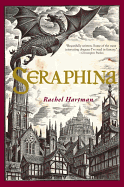
| Publisher: | Random House | |
| Genre: | Girls & Women, Animals, General, Fantasy & Magic, Dragons, Unicorns & Mythical, Family, Juvenile Fiction | |
| ISBN: | 9780375866562 | |
| Pub Date: | July 2012 | |
| Price: | $17.99 |
| Starred | Children's & Young Adult |
by Rachel Hartman
Rachel Hartman's captivating debut novel explores the pains 16-year-old Seraphina suffers as an outsider as well as the rewards of excelling in something she loves.
In medieval Lavondaville, an uneasy truce exists between dragons and humans. Narrator Seraphina is the product of a dragon mother and a human father. Dragons can disguise themselves as humans, so everyone believes Seraphina to be entirely human. Only when Seraphina's mother died in childbirth did Seraphina's father learn her true nature. Her mother left Seraphina a gift of "mind-pearls," memories triggered by specific events, and also her talent for music. Dragons are known for their technical skill, and that, together with the empathy Seraphina gained from her human father, makes her one of the finest musicians in the land. She has won a coveted position assisting the court composer.
After the death of Prince Rufus, in a manner suspiciously like a dragon's preferred means (decapitation), tensions run high between humans and dragons. Seraphina's position at court exposes her to aspects of both dragon and human societies. When she decides to trust Prince Lucian with her suspicions about Prince Rufus's killer, they embark on a journey that tests her loyalties and strength, and also awakens Seraphina's feelings for him.
In this first of two planned books, Hartman creates a world simultaneously strange and familiar. Her dragons are as magnetic as her human characters. Teens will readily identify with Seraphina's conflicting desires: to please her family or to make her own future. --Jennifer M. Brown, children's editor, Shelf Awareness

| Publisher: | Simon & Schuster | |
| Genre: | Science Fiction, Fantasy & Magic, Social Issues, Juvenile Fiction, Humorous Stories, Pregnancy, Emotions & Feelings | |
| ISBN: | 9781442429604 | |
| Pub Date: | July 2012 | |
| Price: | $16.99 |
| Children's & Young Adult |
by Martin Leicht, Isla Neal
Juno meets Alien in this launch title in a new series by Martin Leicht and Isla Neal, set on a spaceship full of pregnant teenagers trying to return to earth after being threatened with an alien invasion. Galactic battles and hilarity ensue.
The year is 2074, and 16-year-old Elvie Nara's dreams of becoming a space engineer are crushed after she "got the hots for Cole Archer" and got knocked up. After hearing the news, Cole bails, leaving Elvie with "one bun and no baker." To escape her arch-nemesis Britta McVicker, Elvie enrolls at the Hanover School for Expecting Teen Mothers. Readers first meet her there, where she has been for three months, and with a due date three weeks away.
The Hanover School for Expecting Teen Mothers, aboard the spaceship Echidna, not only offers no protection for Elvie from Britta (who also is pregnant with Cole's child) but also fails to defend the students from their teachers, who turn out to be extraterrestrials. Fortunately, commandos have arrived to rescue the girls. Unfortunately for Elvie, Cole is one of them.
Sassy, tenacious and expectant mother Elvie goes through her unexpected pregnancy with no preachiness. Even though her unborn "Goober" just might be an alien, Elvie's maternal instincts kick in to defend it from ending up in the wrong, extraterrestrial hands with sheer willpower--and a ray gun. With a well-imagined mythology and entertaining friction between Elvie and Cole, a fun new trilogy is born. --Adam Silvera

| Publisher: | Marshall Cavendish | |
| Genre: | Social Issues, Juvenile Fiction, New Experience, Violence | |
| ISBN: | 9780761462675 | |
| Pub Date: | May 2012 | |
| Price: | $17.99 |
| Children's & Young Adult |
by Terry Farish
In this eloquent free-verse novel, 15-year-old Viola relates the horrors of wartorn Juba, Sudan, in 1999, and her pursuit of freedom in the U.S.
Viola lives with her mother, grandmother and five-year-old brother, Francis. Each day they fear the armed soldiers will come. There is little food, but they make the dense white aseeda to eat and they have each other. Gwendolyn, their very pregnant neighbor, grows groundnuts. Viola trades her a handful of seeds in exchange for watering her crop. One day, while Viola is in Gwendolyn's garden, with Francis a little ways off, a soldier comes to Viola. She tells Francis with her eyes to be silent. He stays quiet, and Viola goes with the soldier in order to protect Francis. The soldier steals her "bride wealth"--he rapes her.
That is not the end of the family's tragedies, but it is also not the end of their happiness. Through Habuba's brother in America, they gain entry to a Sudanese community in Portland, Maine. Viola discovers she is neither in the Sudan nor is she fully in Portland ("I am waiting for myself/ to catch up with/ my body"). But by story's end, Viola has in many ways returned to herself, and she finds ways to honor her heritage.
Viola describes her surroundings through all five senses: The "sickening sweet" tobacco smell of the soldier, the exhaust fumes of Cairo where they wait for papers, and her grandmother's loving hands, braiding her hair. Unforgettable. --Jennifer M. Brown, children's editor, Shelf Awareness